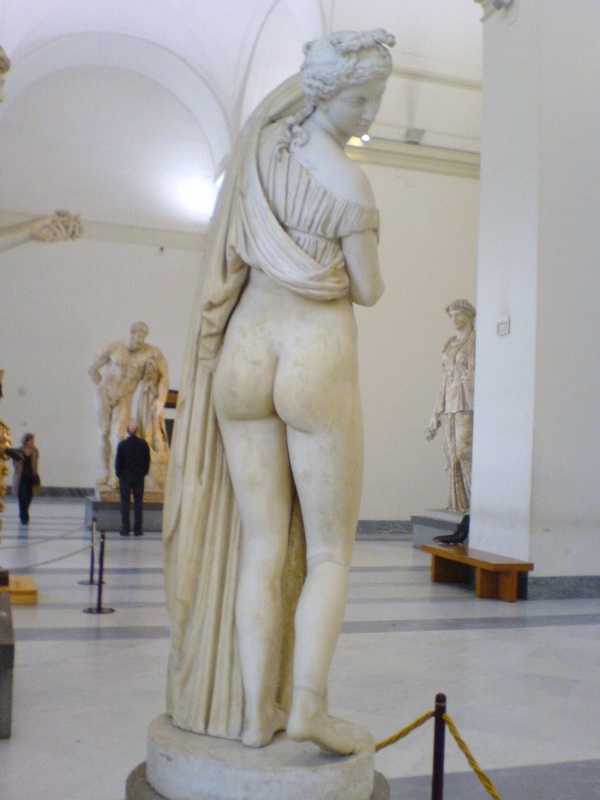Facts About Venus Kallipygos
The Venus Callipyge, also known as Aphrodite Kallipygos or the Callipygian Venus, is a captivating Ancient Roman marble statue. It is believed to be a copy of an older Greek original. This statue depicts a partially draped woman lifting her garment to reveal her hips and buttocks while glancing back over her shoulder, possibly to admire her own form. Although traditionally identified as Venus, some scholars suggest it might actually portray a mortal woman.
The marble statue we see today dates back to the late 1st century BC. However, the lost Greek original, likely cast in bronze, is thought to have been created around 300 BC during the Hellenistic period. The exact origins of this marble version remain unknown, but it was rediscovered without its head in the early modern era. The head was restored in the 16th and 18th centuries, with restorers choosing to have the figure look back over her shoulder, thereby emphasizing her exposed buttocks and increasing the statue's popularity.
The statue was acquired by the Farnese family and eventually relocated to Naples in the 18th century. Over the years, it underwent various restorations and relocations. Today, it resides in the Naples National Archaeological Museum.
The decision to have the figure look back added a significant erotic element to the statue. This pose drew attention to the exposed buttocks, linking it to a story from Athenaeus' "Deipnosophists" about the founding of a temple dedicated to Aphrodite Kallipygos in Syracuse, Sicily.
Throughout the centuries, numerous copies of the Venus Callipyge have been made, with some even finding their way to places like Versailles. In modern times, the statue has been referenced in 20th-century lyrics and connected to classical stories and mythologies.

 San Marino
San Marino